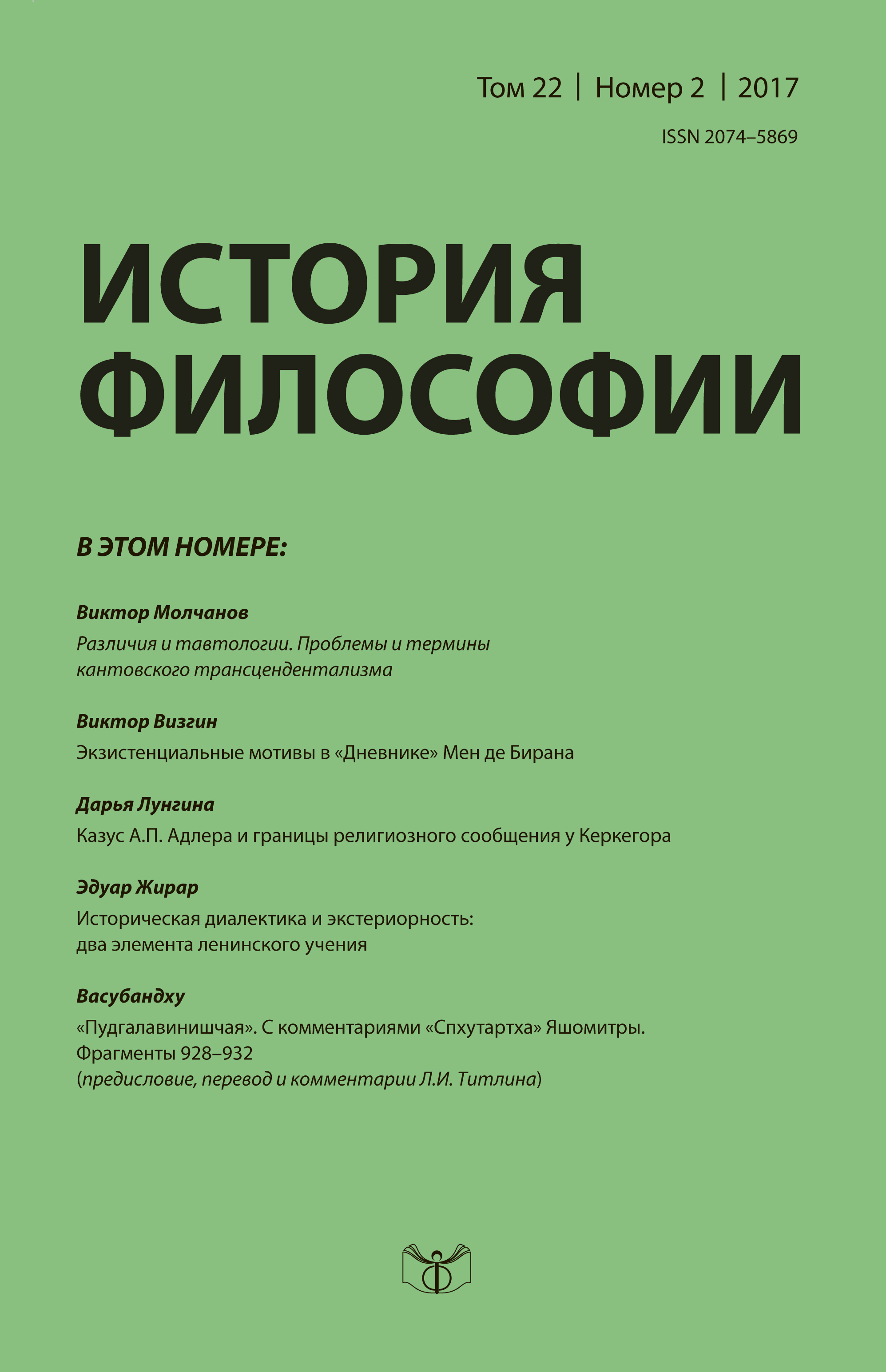The Adolph Peter Adler Case and the Limits of Religious Communication in Kierkegaard
Keywords:
limits of speech, religious communication, authority and without authority, inwardness, subjectivity, the Revelation, Christianity in the 19th centuryAbstract
The events which took place between 1842 and 1846 with of Adolph Peter Adler gave rise to further elaboration of Kierkegaard’s theory of communication. This was the subject of unpublished “Book on Adler” and the article “On the Difference Between the Genius and the Apostle” (1849), which accumulated the message of the book. Kierkegaard not only reviewed the difference between direct and indirect communication which he applied before 1846. The case of Adler set Kierkegaard thinking otherwise, in the direction of the principle difference between speaking with and without authority. Has religious speech a special status in view of transcendent status Christianity? What is the subject of religious communication in that case and its difference from aesthetic, philosophical and scientific ones? After 1846 Kierkegaard introduced the new communicator into his religious writings. This “marionette” served the purpose to show how to share the inward, to disclose the secret of Revelation to people. Thus the difference between the genius and the apostle became important for the late Kierkegaard.

